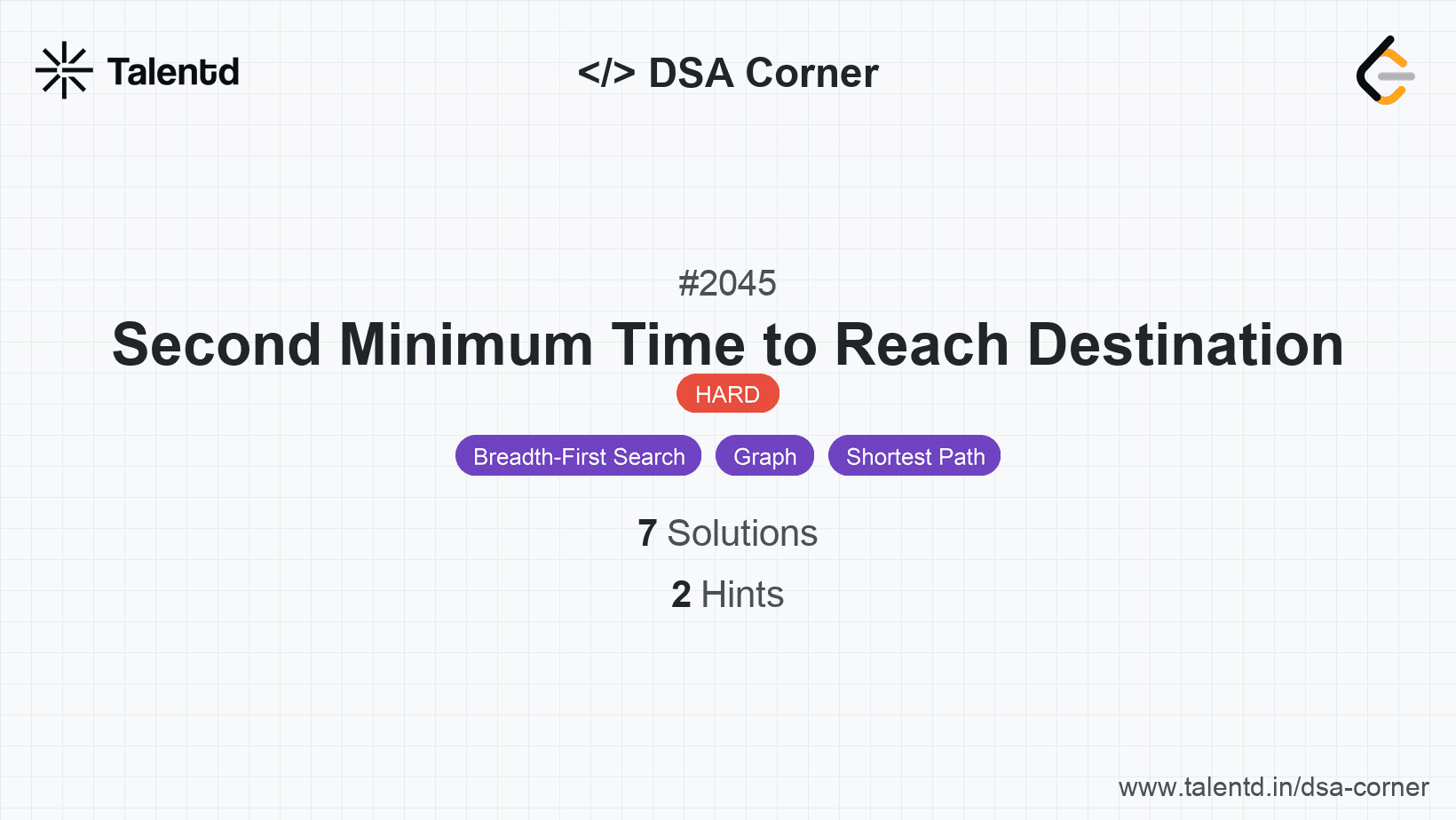
Sponsored
Sponsored
This approach involves using a priority queue to simulate a modified version of Dijkstra's algorithm, aiming to track both the shortest and second shortest path times to the last node. The cost of each step is affected by traffic signal delays, calculated based on the cumulative time spent traveling.
The time complexity is O(E log V), where E is the number of edges, and V is the number of vertices, due to the priority queue operations. The space complexity is O(V + E) due to the storage of the adjacency list and the min_time/second_min_time arrays.
1#include <iostream>
2#include <vector>
3#include <queue>
4#include <climits>
5
6using namespace std;
7
8int secondMinimum(int n, vector<vector<int>>& edges, int time, int change) {
9 vector<vector<int>> graph(n + 1);
10 for (const auto& edge : edges) {
11 graph[edge[0]].push_back(edge[1]);
12 graph[edge[1]].push_back(edge[0]);
13 }
14
15 vector<int> first_min(n + 1, INT_MAX);
16 vector<int> second_min(n + 1, INT_MAX);
17 priority_queue<pair<int, int>, vector<pair<int, int>>, greater<>> pq;
18 pq.emplace(0, 1);
19 first_min[1] = 0;
20
21 while (!pq.empty()) {
22 auto [curr_time, node] = pq.top();
23 pq.pop();
24
25 for (int neighbor : graph[node]) {
26 int wait_time = 0;
27 if ((curr_time / change) % 2 == 1) {
28 wait_time = change - (curr_time % change);
29 }
30 int new_time = curr_time + wait_time + time;
31
32 if (new_time < first_min[neighbor]) {
33 second_min[neighbor] = first_min[neighbor];
34 first_min[neighbor] = new_time;
35 pq.emplace(new_time, neighbor);
36 } else if (new_time > first_min[neighbor] && new_time < second_min[neighbor]) {
37 second_min[neighbor] = new_time;
38 pq.emplace(new_time, neighbor);
39 }
40 }
41 }
42
43 return second_min[n];
44}This C++ implementation takes advantage of priority queues for path exploration, maintaining information about the traffic signal's state and employing that to calculate actual travel times. Two vectors are utilized to store the first and second minimum times for each node.
This approach leverages a Breadth-First Search (BFS) to explore paths in level order, carefully managing path times with respect to traffic signal cycles. Time values are stored to identify both the shortest and second shortest paths throughout the search.
The time complexity is O(E) due to the traversal of all edges and the space complexity is O(V + E) for graph and time-tracking arrays.
1using System;
2using System.Collections.Generic;
3
4public class Solution {
public int SecondMinimum(int n, int[][] edges, int time, int change) {
var graph = new List<int>[n + 1];
for (int i = 1; i <= n; i++) graph[i] = new List<int>();
foreach (var edge in edges) {
graph[edge[0]].Add(edge[1]);
graph[edge[1]].Add(edge[0]);
}
var firstMinTime = new int[n + 1];
var secondMinTime = new int[n + 1];
Array.Fill(firstMinTime, int.MaxValue);
Array.Fill(secondMinTime, int.MaxValue);
firstMinTime[1] = 0;
var queue = new Queue<(int, int)>(); // (current_time, node)
queue.Enqueue((0, 1));
while (queue.Count > 0) {
var (currTime, currNode) = queue.Dequeue();
foreach (var neighbor in graph[currNode]) {
int waitTime = 0;
if ((currTime / change) % 2 == 1) {
waitTime = change - (currTime % change);
}
int newTime = currTime + waitTime + time;
if (newTime < firstMinTime[neighbor]) {
secondMinTime[neighbor] = firstMinTime[neighbor];
firstMinTime[neighbor] = newTime;
queue.Enqueue((newTime, neighbor));
} else if (newTime > firstMinTime[neighbor] && newTime < secondMinTime[neighbor]) {
secondMinTime[neighbor] = newTime;
queue.Enqueue((newTime, neighbor));
}
}
}
return secondMinTime[n];
}
}This C# implementation adopts BFS strategy supplemented with queue mechanics to facilitate transition timing. It captures path times into arrays to discern shortest travel durations under dynamic traffic signal conditions.